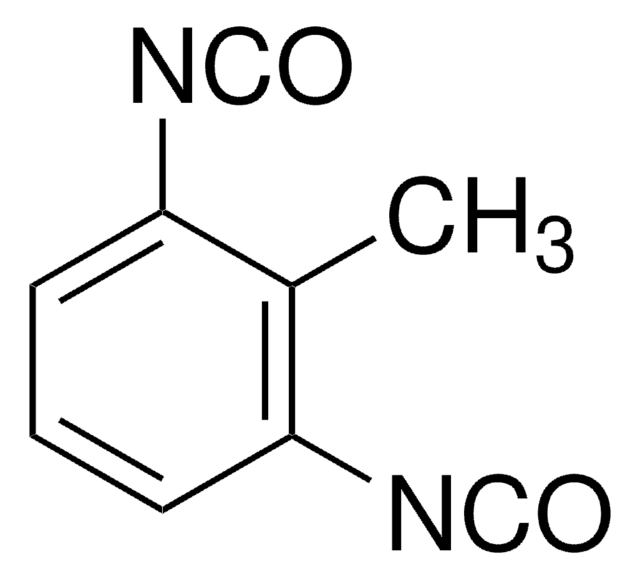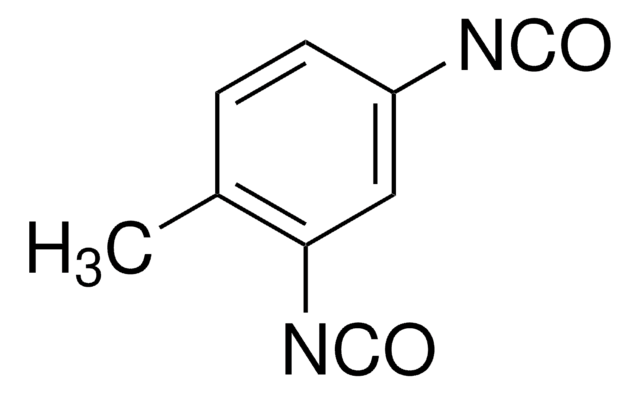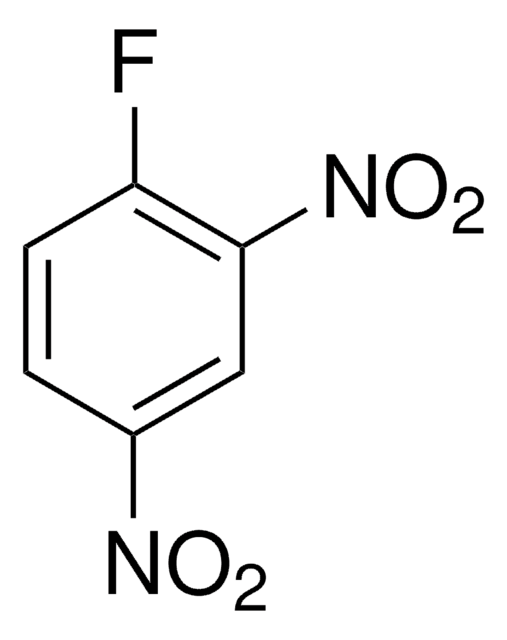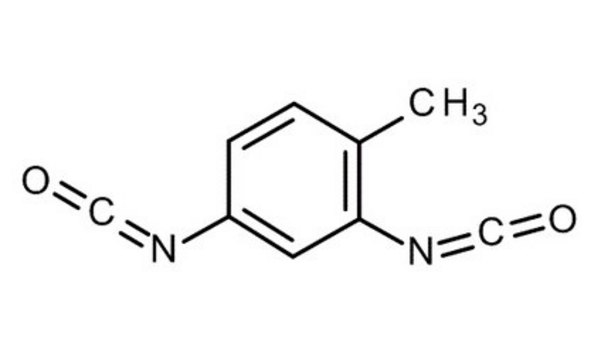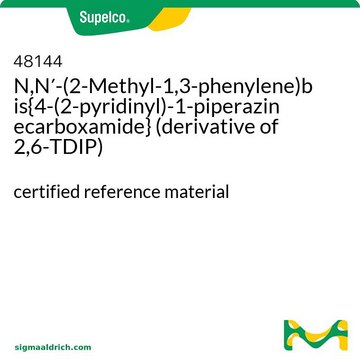推荐产品
等级
analytical standard
质量水平
自燃温度
>1148 °F
保质期
limited shelf life, expiry date on the label
技术
HPLC: suitable
gas chromatography (GC): suitable
折射率
n20/D 1.571 (lit.)
沸点
129-133 °C/18 mmHg (lit.)
密度
1.225 g/mL at 25 °C (lit.)
应用
cleaning products
cosmetics
environmental
food and beverages
personal care
包装形式
neat
储存温度
2-8°C
SMILES字符串
Cc1c(cccc1N=C=O)N=C=O
InChI
1S/C9H6N2O2/c1-7-8(10-5-12)3-2-4-9(7)11-6-13/h2-4H,1H3
InChI key
RUELTTOHQODFPA-UHFFFAOYSA-N
正在寻找类似产品? 访问 产品对比指南
一般描述
Find all available reference materials for compounds listed in 10/2011 here
应用
警示用语:
Danger
危险分类
Acute Tox. 2 Inhalation - Aquatic Chronic 3 - Carc. 2 - Eye Irrit. 2 - Resp. Sens. 1 - Skin Irrit. 2 - Skin Sens. 1 - STOT SE 3
靶器官
Respiratory system
储存分类代码
6.1A - Combustible acute toxic Cat. 1 and 2 / very toxic hazardous materials
WGK
WGK 2
闪点(°F)
230.0 °F - closed cup
闪点(°C)
110 °C - closed cup
个人防护装备
Eyeshields, Faceshields, Gloves, type ABEK (EN14387) respirator filter
法规信息
我们的科学家团队拥有各种研究领域经验,包括生命科学、材料科学、化学合成、色谱、分析及许多其他领域.
联系技术服务部门